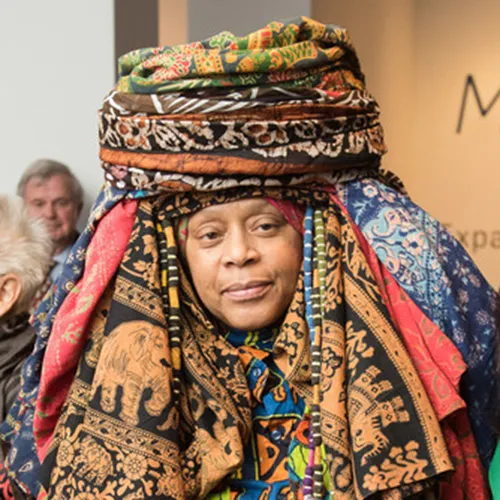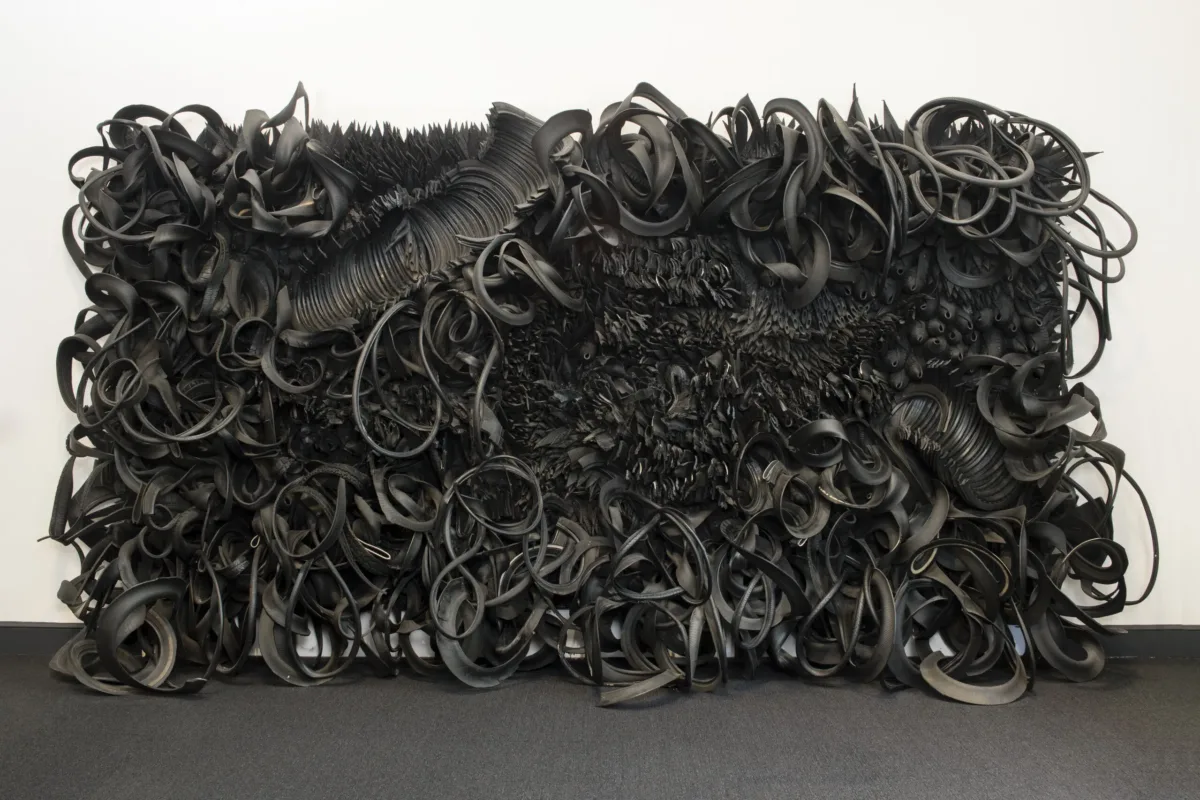Chakaia Booker

Chakaia Booker at the Magnetic Fields opening reception, 2017; Photo by Kevin Allen
Booker began to integrate discarded construction materials into large, outdoor sculptures in the early 1990s. Tires resonate with her for their versatility and rich range of historical and cultural associations. Booker slices, twists, weaves, and rivets this medium into radically new forms and textures, which easily withstand outdoor environments.
For her, the varied tones of the rubber parallels human diversity, while the tire treads suggest images as varied as African scarification and textile designs. The visible wear and tear on the tires evokes the physical marks of human aging. Equally, Booker’s use of discarded tires references industrialization, consumer culture, and environmental concerns.
Booker’s artistic process is enormously physical, from transporting the tires to reshaping them with machinery. Though she has adopted utilitarian jeans and work boots in her studio, she always wears a large, intricately wrapped headdress, which has links to her earliest wearable art and has become her fashion signature.
Booker received a B.A. in sociology from Rutgers University in 1976, and an M.F.A. from the City College of New York in 1993. She gained international acclaim at the 2000 Whitney Biennial with It’s So Hard to Be Green (2000), her 12.5 x 21 foot wall-hung tire sculpture. Booker received the Pollock-Krasner Grant in 2002 and a Guggenheim Fellowship in 2005. She has exhibited in group and solo exhibitions nationally and internationally.
